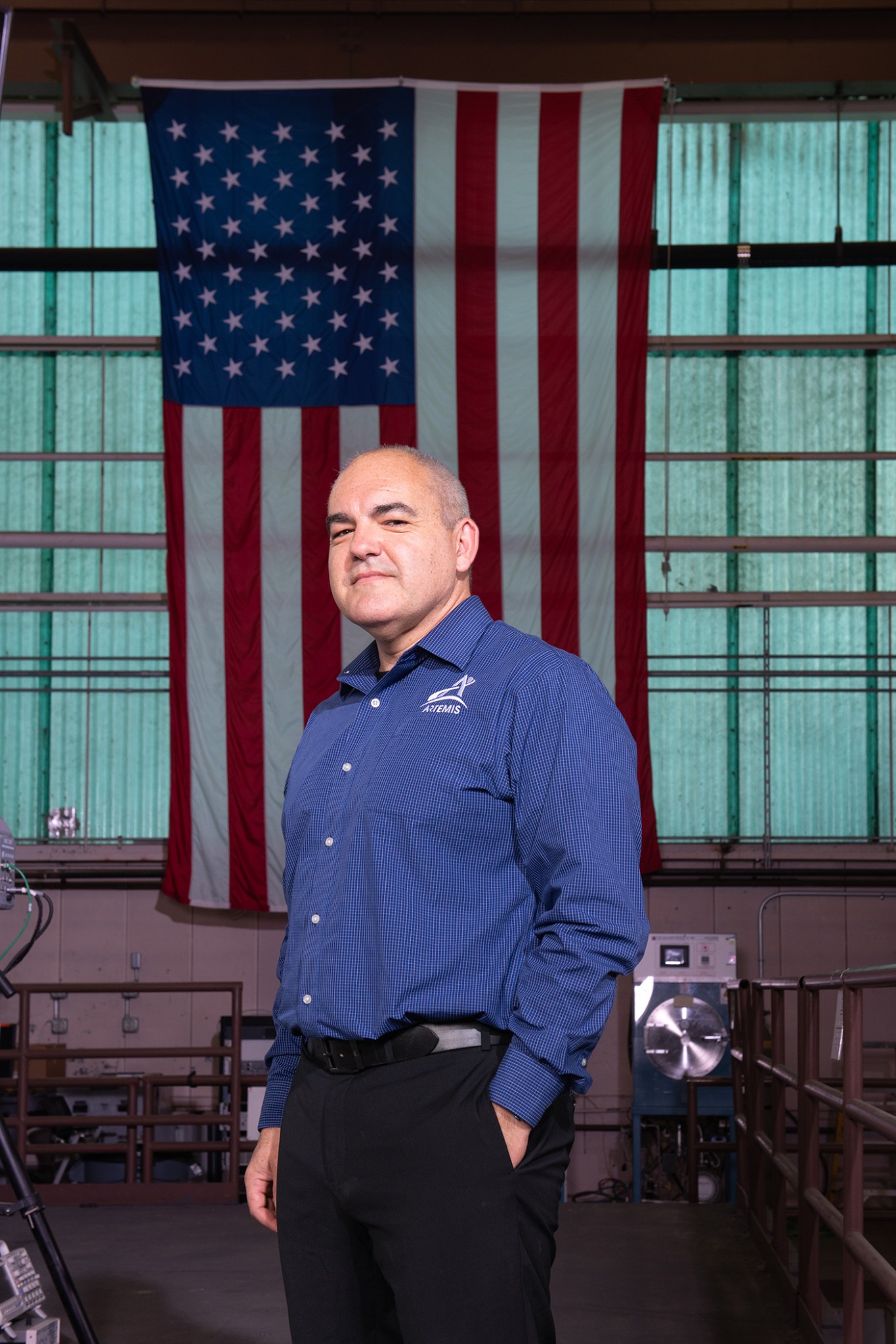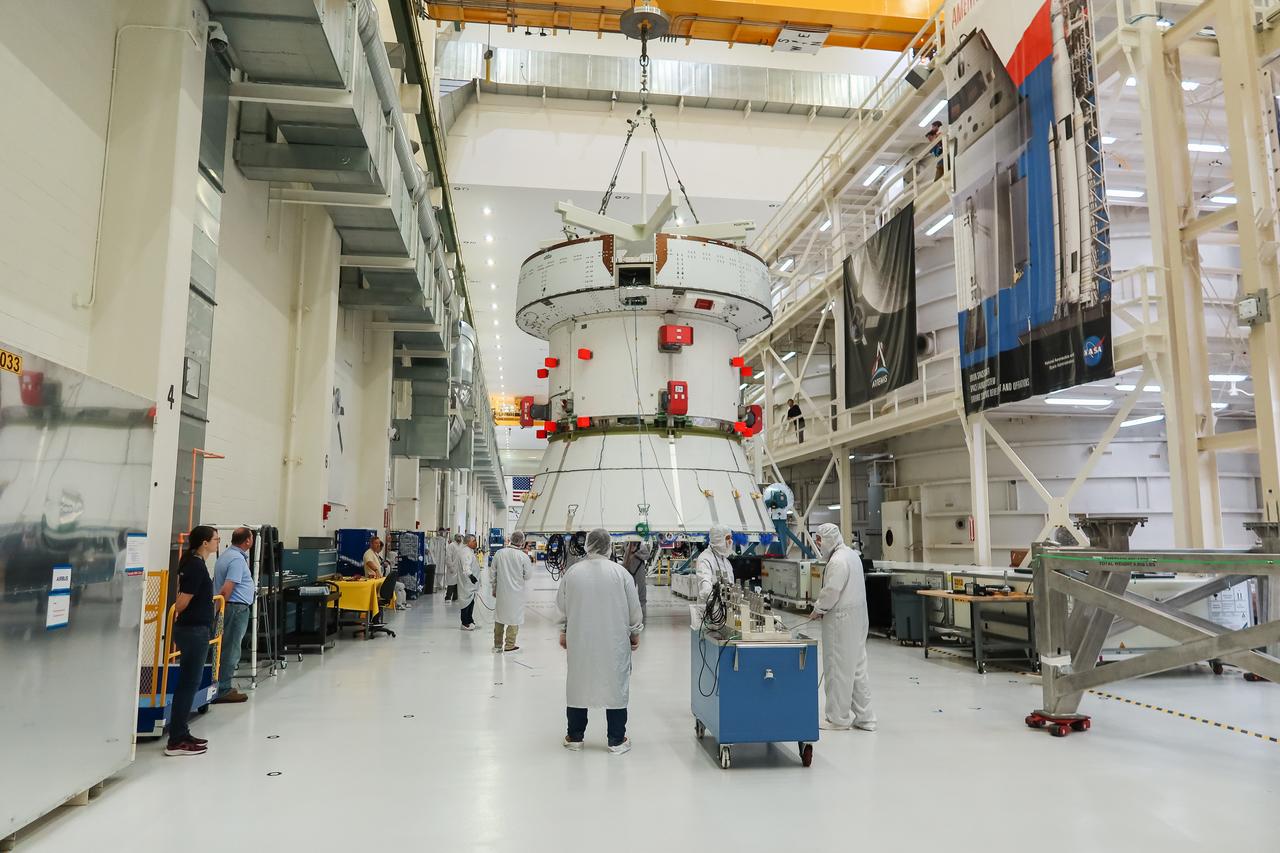NASA’s Modern History Makers: Carlos Garcia-Galan
4 min read
NASA’s Modern History Makers: Carlos Garcia-Galan

As a little boy in Málaga, Spain, Carlos Garcia-Galan had his sights set on the Moon, Mars, and beyond.
“It’s something that called to me from the very beginning. I remember listening to the space shuttle countdowns and watching the launches on television,” said Garcia-Galan, European Service Module (ESM) Integration Office manager for NASA’s Orion program. “The entire sky would light up at night.”
Garcia-Galan wanted to be part of the team working behind the scenes to send astronauts on challenging missions to distant destinations. But there were few opportunities to work in space exploration from his home country, he said. To pursue his dreams, he’d first have to cross the Atlantic Ocean.
“Working for NASA was my only objective,” Garcia-Galan said. “My dad was a pilot, and my mom was a flight attendant. So, I had this adventure thing already, and I traveled a lot growing up because of them.”
Garcia-Galan came to America his senior year of high school as an exchange student in New Jersey, later attending the Florida Institute of Technology’s space science program. He graduated with degrees in space science and electrical engineering.
“As I was graduating with my second degree, all of my friends from the space science program had already graduated and started working in Mission Operations at NASA’s Johnson Space Center,” Garcia-Galan said. “NASA was just about to fly the first module of the International Space Station, so I was able to get a job before I finished my degree. It was great timing.”
At Johnson, Garcia-Galan worked as a flight controller for the space station, managing electrical power systems. He left NASA to broaden his knowledge by working in industry but eventually returned. Now, he works on the European Service Module — the powerhouse that provides electricity, water, oxygen, nitrogen, and propulsion to the Orion spacecraft. Proven during Artemis I, Orion will carry astronauts to the Moon and back during future Artemis missions.

Garcia-Galan manages the ESM and the team working with European counterparts to design, build, and fully integrate the mission-specific modules with their Orion spacecraft.
“It’s hard enough to build spacecraft across the United States with all the contractors; imagine doing this across different continents,” he said. “I want to make sure we’re one team.”
When the modules arrive from Europe, his team ensures that they are ready for pre-flight tests and, ultimately, the mission.
“On my team, I have engineers who represent different disciplines,” Garcia-Galan said. “The ESM is like its own spacecraft, so we have everything from propulsion to mechanisms to thermal systems. I keep the whole team synchronized and working to our full potential.”
Garcia-Galan encourages others interested in space exploration to pursue their interests, no matter where they are from.
“If you want to be part of something bigger than yourself — something that takes an entire team of people across different countries — space exploration is a great place to exercise that,” Garcia-Galan said. “We have engineers, communicators, teachers, and astronauts, and everybody is working toward the same goal. You can be part of that. Just be persistent, have a goal in mind, don’t get turned away by adversities, and you may end up here at NASA.”
NASA is in a Golden Era of aeronautics and space exploration. In partnership with commercial and private businesses, NASA is currently making history with significant missions such as Artemis, Quesst, and electrified aviation. The NASA’s Modern History Makers series highlights members of NASA Glenn’s workforce who make these remarkable missions possible.
Jacqueline Minerd
NASA’s Glenn Research Center
Powered by WPeMatico
Get The Details…
Kelly M. Matter



